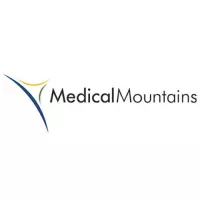
Tuttlingen – Regulations, digitization, globalization or demographic change: the development of the medical technology industry is influenced by a number of factors – some inhibit, some push. In order to find a common path into the future, MedicalMountains GmbH is leading the way with companies in the vision process. The second online meeting of the working groups will take place on June 24th.
The straight way forward, the linear extrapolation of the present to a specific point in time in the future, no longer works. This knowledge, trivial in itself, determines the thinking in the vision process. Yvonne Glienke, Managing Director of MedicalMountains GmbH, is in the middle of the preparations for the second workshop with department head Britta Norwat. "In this phase, it's all about drafting common vision elements," they describe the procedure, "we identify core statements of a desirable future." Numerous ideas and thoughts were already collected at the first meeting. Megatrends, the drivers of change, have been related to industry strengths, concerns and expectations. This thread will be resumed on June 24th.
What is the goal of the vision process - or better: what distinguishes a vision from a goal? This question comes up again, reports Yvonne Glienke. “The vision is flexible, the goal concrete. The vision comes before the goal,” the managing director puts it in a nutshell, using an example from the automotive industry to illustrate this. “You could say today: In 10 years we want to have electric car batteries that enable a range of over 1,000 kilometers. That is a goal,” describes Yvonne Glienke. "One vision, on the other hand, is to deal with the factors that will influence our mobility in 10 years and to derive tools from them for reacting to needs." This image can be transferred to medical technology. “To have adequate health care for an aging society in 10 years – this statement formulates a goal. Dealing now with the foreseeable demands that life will have in old age, how digitization is changing it, what influence urbanization is having on it – that is visionary.” Concrete goals could then be derived from a vision.
All in all, this approach remains more coarse-meshed. However, it makes it possible to react more elastically to possible scenarios. "Basically the alternative to the linear approach," says Yvonne Glienke. Medical technology in Baden-Württemberg is characterized by excellent products. Its importance will continue to grow. But sometimes there is a lack of thinking outside the box. "When existing virtues are placed in the context of megatrends, innovations receive a whole new drive." After all, that's what it's all about: treading paths together in order to continue to be perceived as a successful, solid and reliable medical technology company. The emphasis is on "together". "Because the groups work out the content themselves, the participants also stand behind the results," emphasizes Britta Norwat. "The anchoring within the industry is much more firmly established." Ultimately, that also differentiates the goal from vision. “We operate in a very heterogeneous environment in medical technology,” remembers Britta Norwat, “where there are of course overlaps when it comes to specific goals. With the vision process, however, we open the door for each individual to actually achieve the goals.”





